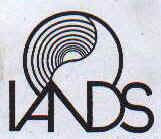THE EXPERIENCE
When people come very dose to death, they
may later report a remarkable experience. Many
thousands of people have reported experiencing
being 'out of the body*; being in a darkness lead-
ing to radiant and indescribable light; feelings of
peace and bliss; and encounters with presences or
meetings with deceased loved ones. Some tell of
being flooded with knowledge far beyond their
ordinary capabilities, or say they have glimpsed
the pattern and meaning of life and the universe.
Almost always, that meaning involves undemand-
ing love and care for others. Others tell of un-
pleasant, distressing, or terrifying experiences full
of hard-to-decipher meaning,
A 'near-death experience' may permanently
alter a person's perceptions of what is real and
important. The most extraordinary aspect of the
experience is that it is unaffected by a person's
cultural background, religion, race, education, or
overall belief system. An NDE may occur during
clinical death or when a person is in no danger of
dying but is under severe stress. There is no
observable connection between the type of experi-
ence and whether a person has lived a 'good' or a
"bad' life. The same clusters of events appear in
any group of experiences, although the way in
which they are described will vary according to
the person's background.
IS IT REAL?
Medical technology may bring survivors back,
but medical science is not able to explain what
happened in the process. The experience may
have a biologically-based trigger, but its impact is
most often felt as a spiritual event. For people
who believe that only physical occurrences can be
'real,' the NDE-or even the idea of such an expe-
rience -- may be disturbing.
Yet the phenomenon cannot be dismissed just
because we cannot explain it. A 1982 Gallup Poll
|
|
reported that at least eight million adults in the
US alone have had an NDE; the figure is now
believed to be closer to thirteen million. Ac-
counts of the experience have come through the
centuries, from many cultures and religious tradi-
tions. Whatever it is, the near-death experience is
neither recent nor local. Something happens, and
it changes people's lives.
WHAT DOES IT MEAN?
To some researchers, the experience suggests
that some aspect of human consciousness may
exist independent of the body and may even sur-
vive physical death. To others, it helps define a
value system based on service. From whatever
perspective we view the NDE and consciousness,
we know there is much to learo.
PROGRAMS AND ACTIVITIES
IANDS' purposes are to encourage research
and academic interest through the publication of
the quarterly Journal of Near-Death Studies', man-
agement of a program of small grants to encour-
age graduate student research: and sponsorship of
occasional research seminars;
to provide reliable Information to (he public
through working with the media around the world;
sponsoring one- to three-day conferences and
programs; and publication of the quarterly news-
letter Vital Signs; and to facilitate support and
Information services. Because many experiencers,
their families, and health care and counseling
professionals have special needs in coping with
the aftereffects of an NDE, networking services and
support groups have developed in the United States,
Canada, the United Kingdom, Australia, France,
Germany, the Scandinavian countries, and Belgium.
|

